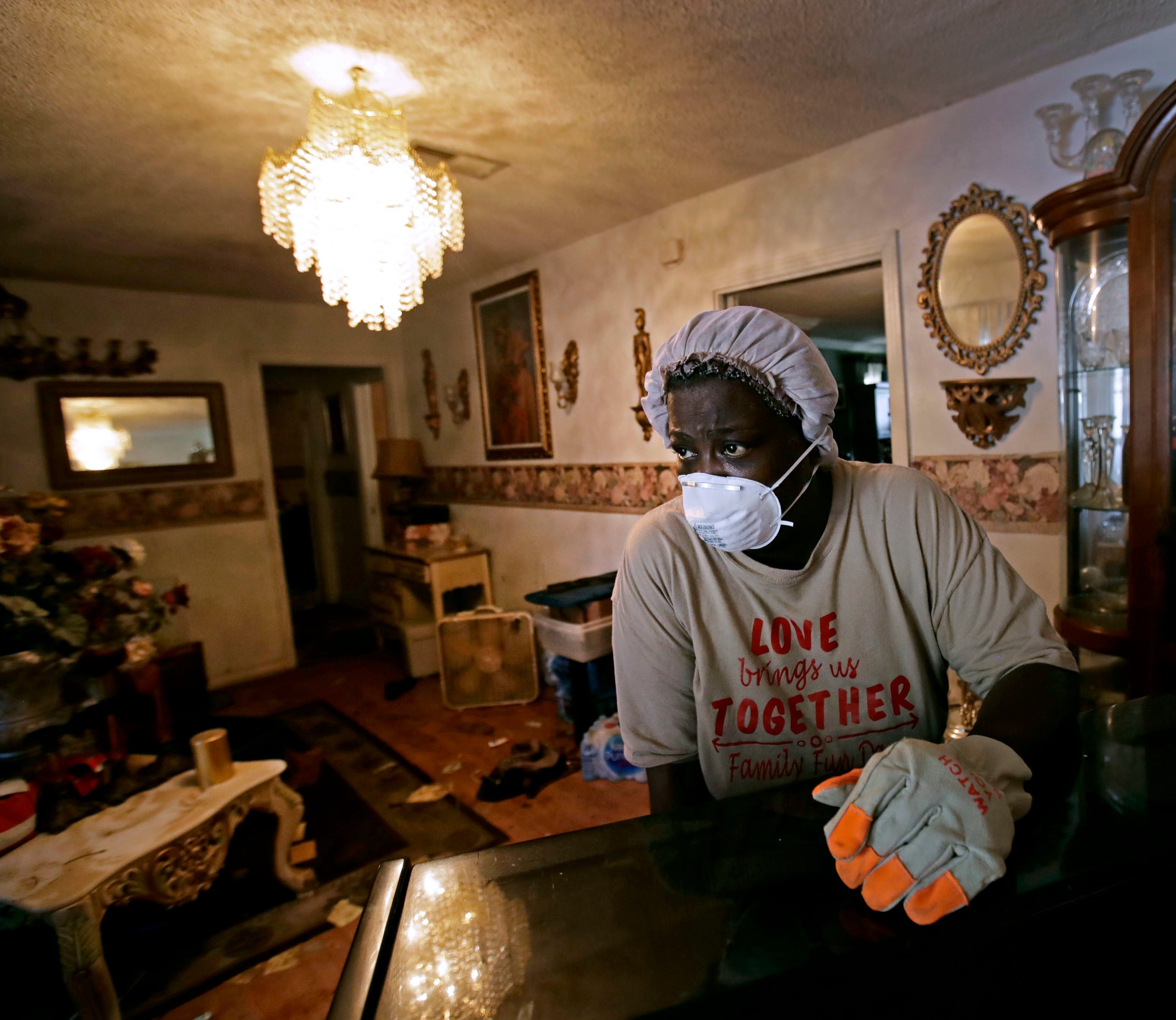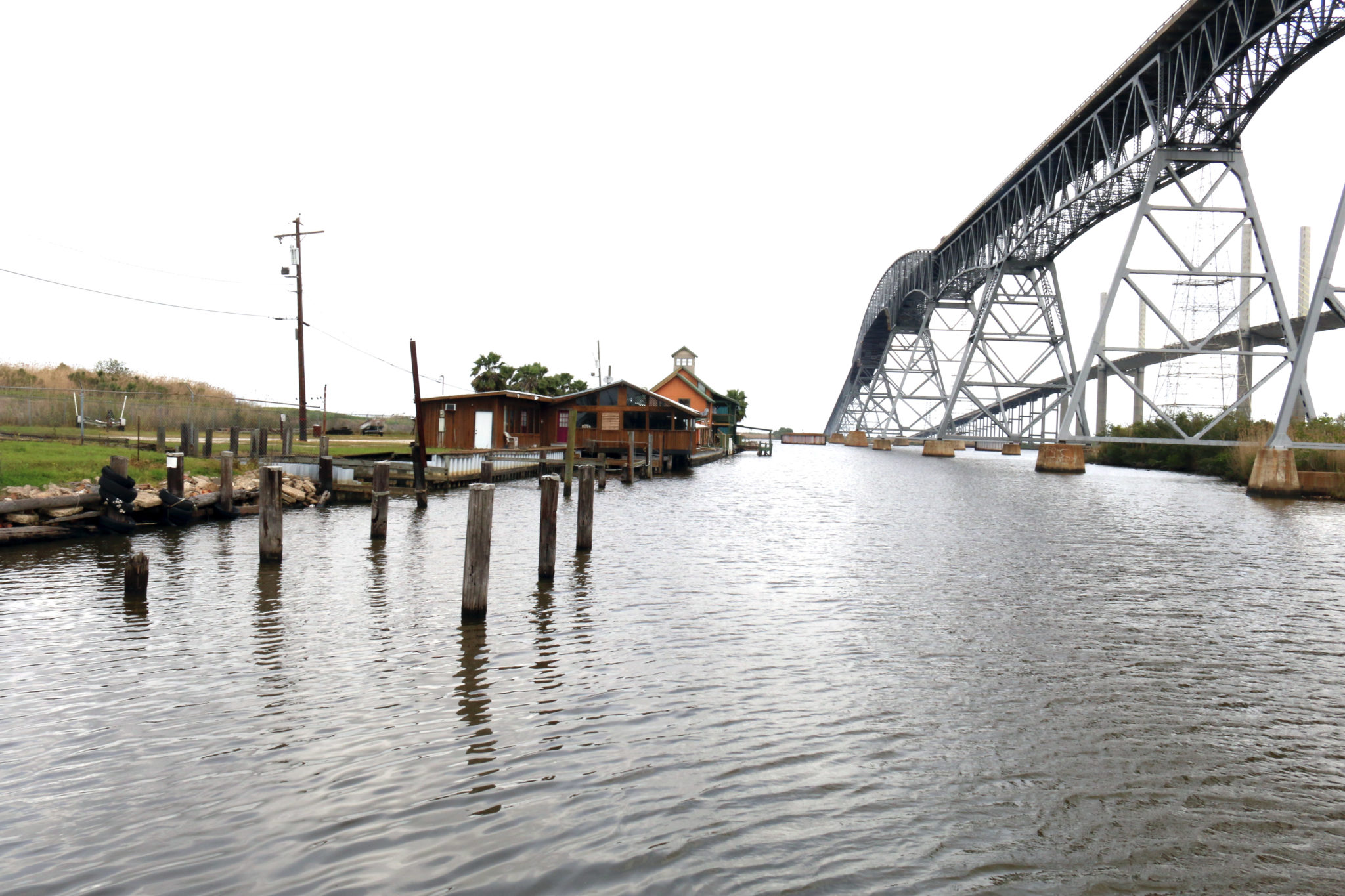
On a Friday morning in mid-May, Beatrice Sanders stepped outside her FEMA trailer to find a port-a-potty parked in her driveway. At first, it seemed like a wonderful surprise, and perfectly timed, too — it was, after all, her 71st birthday that weekend. Maybe, Sanders thought, the portable toilet’s sudden arrival meant that a work crew was coming. Was someone finally going to fix her crumbling house?
Hurricane Harvey dumped about 50 inches of rain on the Texas-Louisiana border last August, flooding the humble three-bedroom house Sanders and her husband bought more than 40 years ago in Port Arthur’s Montrose neighborhood. But in truth, she’d been waiting for a work crew to show up for the last decade. Harvey was her worst storm, but not her first. Hurricane Rita damaged the roof in 2005. After Hurricane Ike flooded their house in 2008, Sanders and her husband applied for disaster recovery money to help them rebuild, but the wait dragged on for years. Sanders says they eventually fixed what they could themselves. She was waiting for housing assistance funds from the state when her husband died in 2015. Two years later, she was still waiting when Harvey’s floodwaters nearly reached her roof and forced her to flee the city on a military helicopter. Sanders said her saving grace was her Chihuahua, Jake, which she smuggled into storm shelters in a grocery sack, feeding him vienna sausages to keep him quiet.
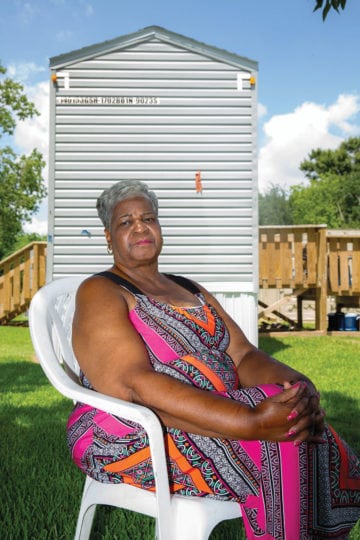
When she returned to Port Arthur in September, Sanders again attempted to navigate the dizzying disaster recovery bureaucracy, a system that changes with each storm. She asked officials, nonprofits and community leaders what she should do, but the mixed messages left her confused and frustrated. In early May, Sanders attended a city housing department meeting where staffers told her the process to apply for long-term help hadn’t even begun. One local official recommended she pray.
When the portable toilet showed up two weeks later, Sanders assumed someone had finally found some answers. “I thought they were fixin’ to start on my house,” she said. “I got happy.”
But her son soon called to deliver what was supposed to be good news: He’d ordered the port-a-potty for the crowd of family and friends set to arrive for a surprise birthday barbecue. Deflated, Sanders tried calling the party off, telling her son she didn’t feel up to it. “He said, ‘Mama, I already done it,’” she recalled. “‘Just put on your happy face.’”
Now in the midst of the next hurricane season, Sanders, like many Port Arthur residents, is stuck in disaster recovery limbo. Her house remains an uninhabitable shell with rotting floors, mold-speckled walls and ceiling fan blades that droop like wilted flower petals. One contractor told her the interior work alone would cost about $69,000. Plus, a city inspector said she’d have to elevate the structure by a foot first. Unsure of whether the house is even worth saving, or whether she’ll have to relocate, Sanders doesn’t know what to do with the $17,000 in FEMA assistance she received after Harvey, money that still sits in her bank account untouched. Her monthly $1,010 in Social Security income along with the FEMA money still wouldn’t come close to making her home livable, much less pay for a new one.
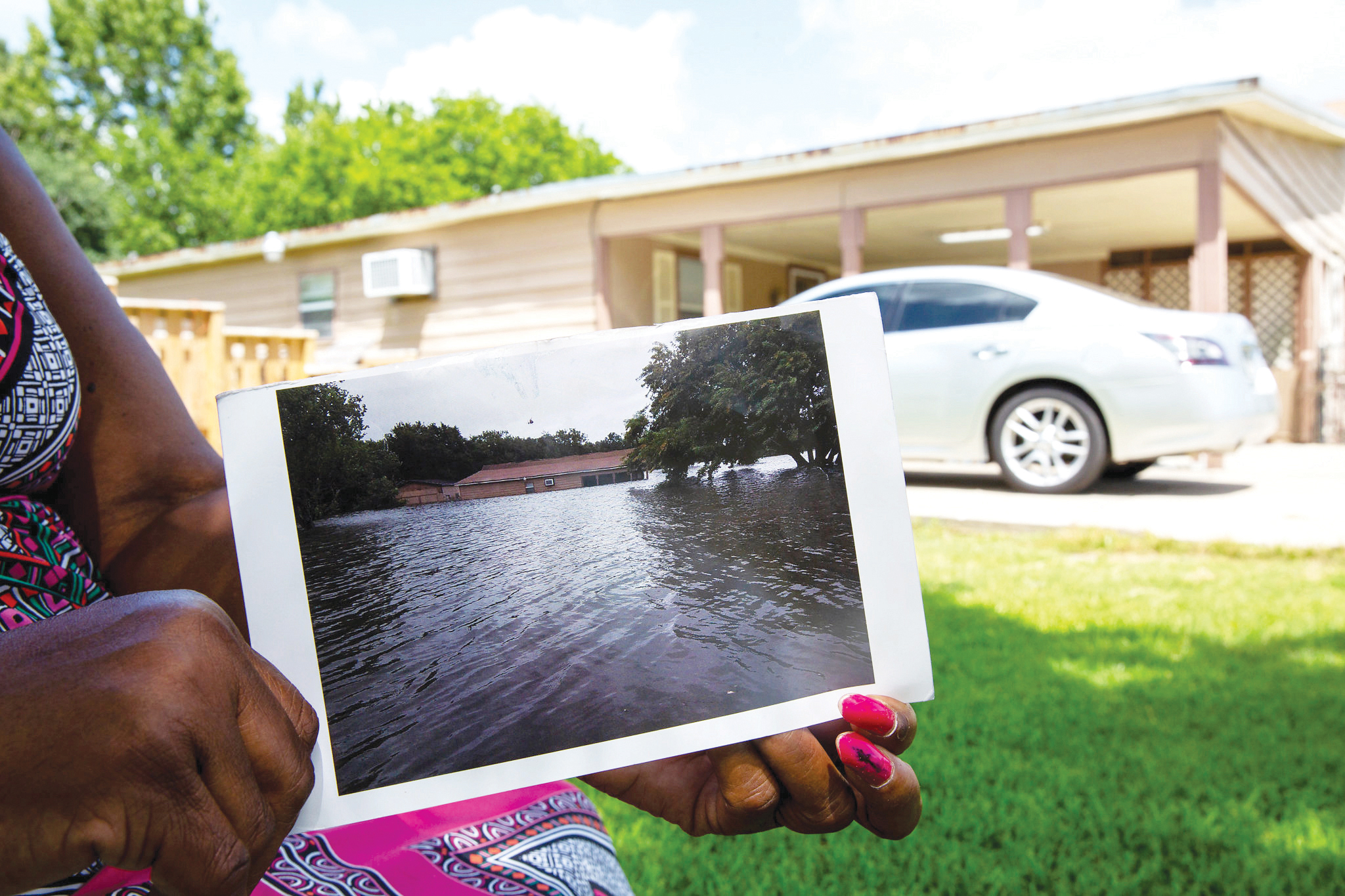
The extent of the storm’s destruction in Port Arthur is staggering: Harvey damaged or destroyed an estimated 80 percent of housing. Even before the storm, parts of Port Arthur looked like a disaster zone. The majority-minority city has long battled endemic poverty and unemployment. The population has been declining since the 1970s, when the court-ordered desegregation of schools spurred an exodus of white residents. The once-bustling downtown has been empty for decades.
Blue FEMA tarps that predate Harvey can be spotted on roofs across the city, a sign that Port Arthur hasn’t recovered yet from past storms. Driving across the historically African-American Westside, community activist Hilton Kelley points to the toxin-spewing oil refineries and petrochemical plants that tower over the public housing projects where he grew up. Kelley says repeated storms and the government’s scrambling response have taken a toll on the city — to the point that some people no longer want to come back and brave the next one. “Some people are just too tired,” Kelley said. “We all get to that moment where, you know what, it’s enough. There’s a lot of storms, but for everybody, one of those storms got their name on it.”
Today, community leaders say Port Arthur is simply fighting for survival. In the last two decades, its population has been in gradual decline, and hovered around 55,000 before Harvey, dangerously close to a critical threshold. Officials worry that if people don’t come back, the storm could push Port Arthur’s population below 50,000, making it ineligible for crucial federal grant programs geared for urban areas.
Advocates for low-income Texans say the fates of storm-ravaged, poor communities like Port Arthur depend on whether officials have learned from the mistakes of past disaster recovery schemes. Even officials who have for decades worked in disaster recovery call it an “evolving science,” an ad hoc system reinvented with every storm.
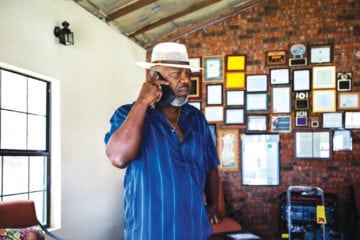
While the $10 billion in federal recovery assistance Texas expects to get after Harvey has yet to make its way to storm victims, advocates point to early decisions by the state that they say threaten to overlook Port Arthur and other poor communities. This summer, the fair housing group Texas Housers filed a complaint with the General Land Office (GLO) that blasted the agency’s Harvey recovery plan as “relegating African American and Hispanic households” to “not only an unequal recovery after Harvey but continued vulnerability during future storms as well.” Port Arthur’s Jefferson County was second only to Harris County in the number of damaged housing units. Yet Port Arthur didn’t even make it on the state’s first list of long-term housing recovery programs approved early this year.
Nearly a year after Harvey, Sanders still looks outside her FEMA trailer and sees a big question mark. A subdivision down the road is filled with empty houses. Debris still clutters some neighborhoods. “For Sale As-Is” signs dot front lawns, and posters reading “I buy houses flooded or not” are tacked on telephone poles. The public library remains closed.
“They’re talking about people wanting to come back,” Sanders said. “Come back to what?”
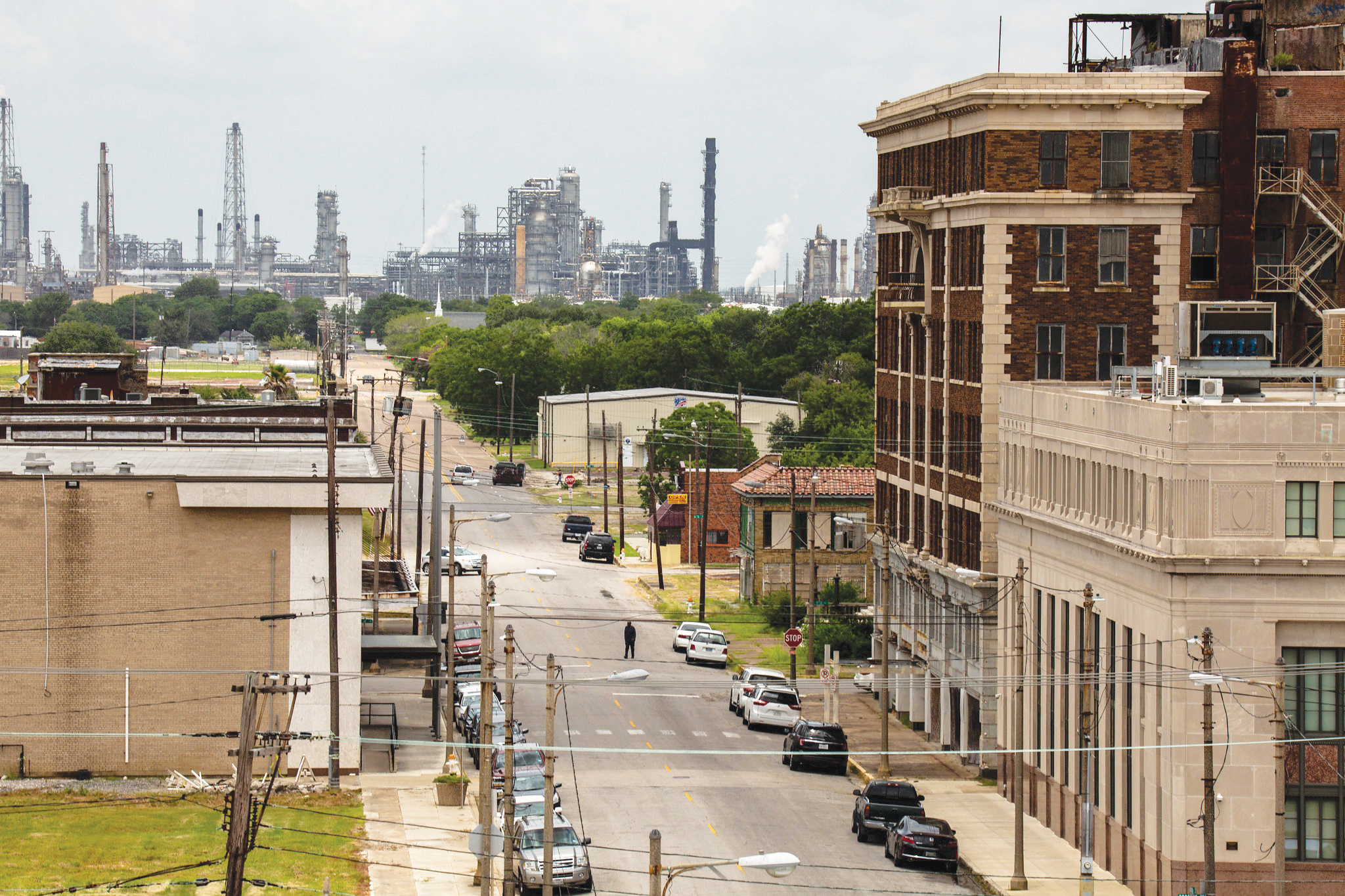
When John Beard wants to show out-of-town visitors Port Arthur, he takes them to the City Council chambers atop City Hall. In his ball cap and an old City Council polo emblazoned with the city’s “Energy City” nickname, Beard is a familiar face around town. From 2003 to 2012, he served on the Port Arthur City Council; today he’s still often spotted roaming City Hall to prod local officials. At the top of the building, a large fifth-floor room offers a panoramic view of the vacant downtown, once a bustling hub of businesses and clubs, many of them black-owned. Tree branches now shoot from the second-story windows of some buildings.
“There’s just a lot of what used to be that ain’t here anymore,” Beard said.
As he looks out over the city, Beard concedes that his children, now nearly done with college, likely won’t stay. He holds enormous pride for Port Arthur’s history, and it pains him that his kids never knew the place he remembers. “All they’ve known is the refineries and the fires and the explosions and odors and weird stuff that goes on in this town,” he said with a sigh.
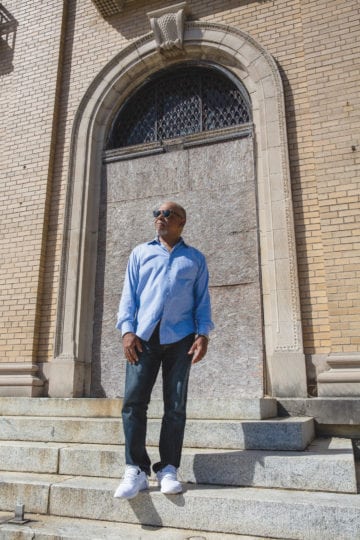
Nearly one-third of the city’s population lives in poverty, rivaling levels found in the poorest parts of the Rio Grande Valley. The region’s 6 percent unemployment rate is one of the highest in Texas. Apart from the refineries, there are few other jobs. After Harvey, even industry appears to be hedging its bets. In early June, Motiva canceled plans to expand its Port Arthur refinery, which would’ve made the plant the largest in the world.
“If anything did happen to oil and gas, Port Arthur would be another Detroit, just like it happened after the auto industry went down,” Mayor Derrick Freeman told the Observer. “We got to have other things propping us up.”
Port Arthur’s problems have been exacerbated by repeated storms. After Ike, a city-commissioned report warned that recurring storm damage had become “additive rather than discrete or separate.” Port Arthur had become “an evacuating community,” the report concluded, where people flee their homes “several times a year with high uncertainty as to what they may return to — if they can return at all.”
The city determined it would need $101 million to recover from Ike and prepare for the next storm. It ultimately got just a quarter of that — $25 million — in federal disaster recovery grants. Many unmet needs after Ike are now on the Harvey wish list, including bare necessities like a local emergency operations center. The city estimates it will take more than $1 billion to recover from Harvey.
Take drainage, for instance. Protected by a seawall on the southeast and higher land to the north, Port Arthur sits in a bowl on the edge of Sabine Lake, the shallow bay that stands between the city and the Gulf. When it floods, a pumping and drainage system that many consider inadequate creaks into action. Local officials estimate that the system, some of which hasn’t seen upgrades since the ’70s, needs nearly $600 million worth of improvements.
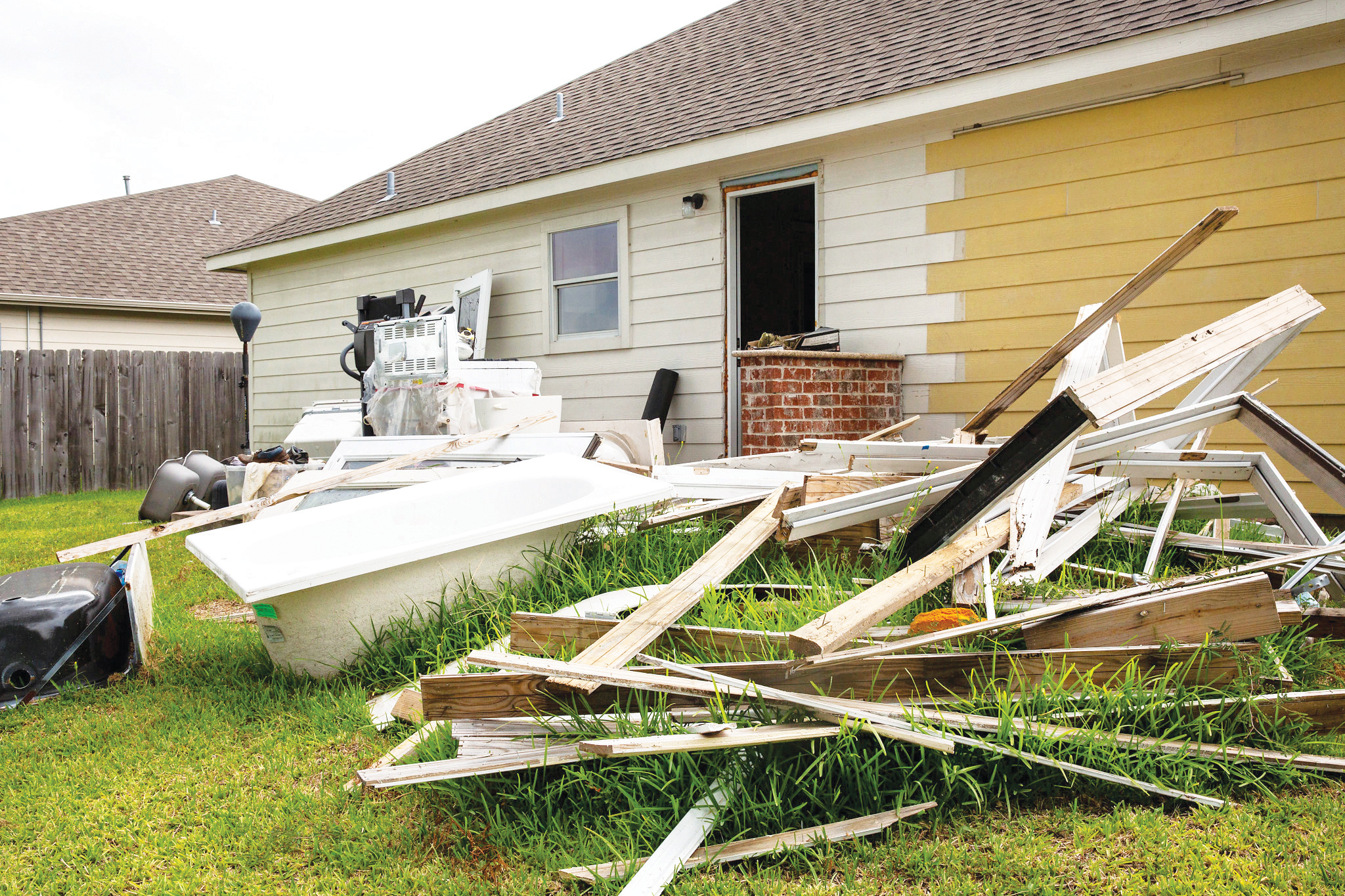
At a City Council meeting last October, Beard told local officials that Harvey should be a wake-up call to fix decades-old problems, such as the drainage system.
“To some of you, what happened to this city looked like almost a death blow,” Beard told City Council. “Maybe this is an opportunity for this city to be reborn, but only if you all make the conscious and right decisions. … This was a warning. With global warming and all that’s going on, it could get worse next time.”
Harvey spotlighted other long-standing problems in the city, like its shortage of temporary housing. After the storm, most of Port Arthur’s hotels were flooded or filled with refinery employees willing to pay more for a room than storm survivors. Some evacuees slept in tents or in the lanes of a bowling alley on the northwest corner of town, while others were flown to shelters around the state.
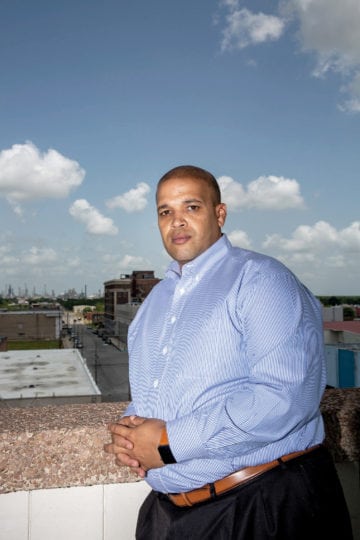
Mayor Freeman even pitched the idea of putting displaced residents on nearby barges, to keep them as close as possible. “I was trying everything,” Freeman said, laughing. “It was desperate.”
When Harvey hit, the mayor was eager to make sure Port Arthur wasn’t forgotten amid national media attention on the shocking flooding in Houston. “Our whole city is underwater right now,” he wrote on Facebook. Residents trapped by flooding posted their locations below a video Freeman livestreamed as he sloshed through knee-deep water inside his house. Meanwhile, Freeman’s cousin, influential Gulf Coast rapper Bun B, went on the radio and fought back tears as he described the devastation he saw in his hometown a few days after Harvey struck.
Freeman, who himself left Port Arthur to live in Los Angeles for 10 years, is now imploring residents to come back. “When you say you made it out of Port Arthur, all I hear is you left your mama behind, you left your neighbors behind,” he said. “Come on home, this is where your inheritance is. We have folks now that are getting FEMA checks and insurance checks and getting on the first thing smoking out of Port Arthur, saying ‘I made it out.’ So I’m trying to put my arms around our citizens, to track them back to Port Arthur and help us rebuild our city.”
Not everyone is heeding Freeman’s call. As of this spring, more than 500 students still had not returned to Port Arthur ISD.
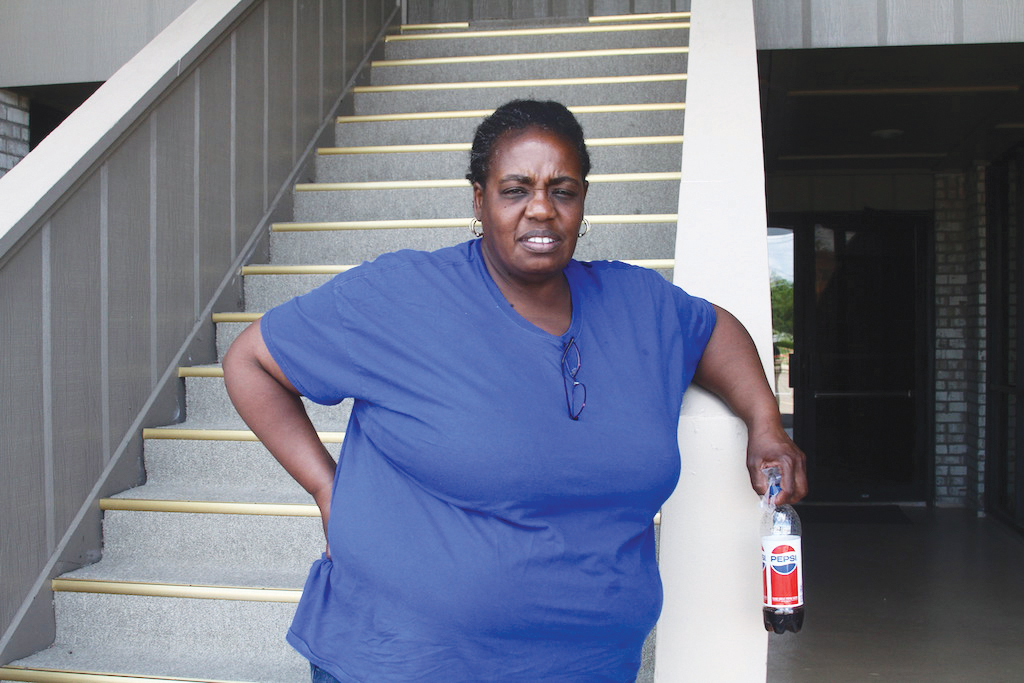
For Janice Rogers, a 57-year-old custodial worker who grew up next to the refineries on Port Arthur’s Westside, Hurricane Harvey was the breaking point. Rogers had actually considered leaving Port Arthur for good after Hurricane Rita in 2005, when she evacuated to San Antonio with her young daughter. Coming back to her hometown was a mistake, she said. “I promised God and myself if ever something like that happened again, I would not be back.”
When Ike struck three years later, forcing Rogers again to flee Port Arthur, she shelved that promise and begrudgingly returned so her daughter could finish her senior year of high school in the city.
Rogers was by herself when Harvey hit nearly a decade later, forcing her to again evacuate her apartment. She spent two days in a local shelter, then jumped at the chance to board a military flight to Dallas. She could finally relax once she got to the Kay Bailey Hutchison Convention Center, which was converted into a storm shelter for Harvey evacuees. After a shower and a hot meal, it dawned on her: She wouldn’t go back to Port Arthur this time.
One truism of disaster recovery is that there’s never enough money. Harvey was unprecedented in its destruction, leaving an estimated $125 billion worth of damage, yet Texas expects to get only about $10 billion in long-term assistance from the feds. But fair housing advocates say the slow-moving, bureaucratic process disproportionately harms poor people, who are the least able to make up the difference on their own. And they point to specific red flags in the state’s response to Harvey, which they say shortchanges low-income communities like Port Arthur.
In the aftermath of a disaster, survivors’ first lifeline comes from FEMA assistance. There’s always a gap between what the agency gives people and what they actually need. Fewer than half of applicants after Harvey received any FEMA help; for those who did, it often wasn’t nearly enough. FEMA assistance simply isn’t intended to return homes to their pre-storm condition.
Those like Beatrice Sanders who don’t have the means to get back into their homes on their own must rely on the slowest disaster recovery programs. That’s where Congress comes in. Lawmakers negotiate an aid package, which is administered by the U.S. Department of Housing and Urban Development. HUD then passes the money down to the states, which have broad latitude to disburse the funds as they see fit. Again, there’s never enough money.
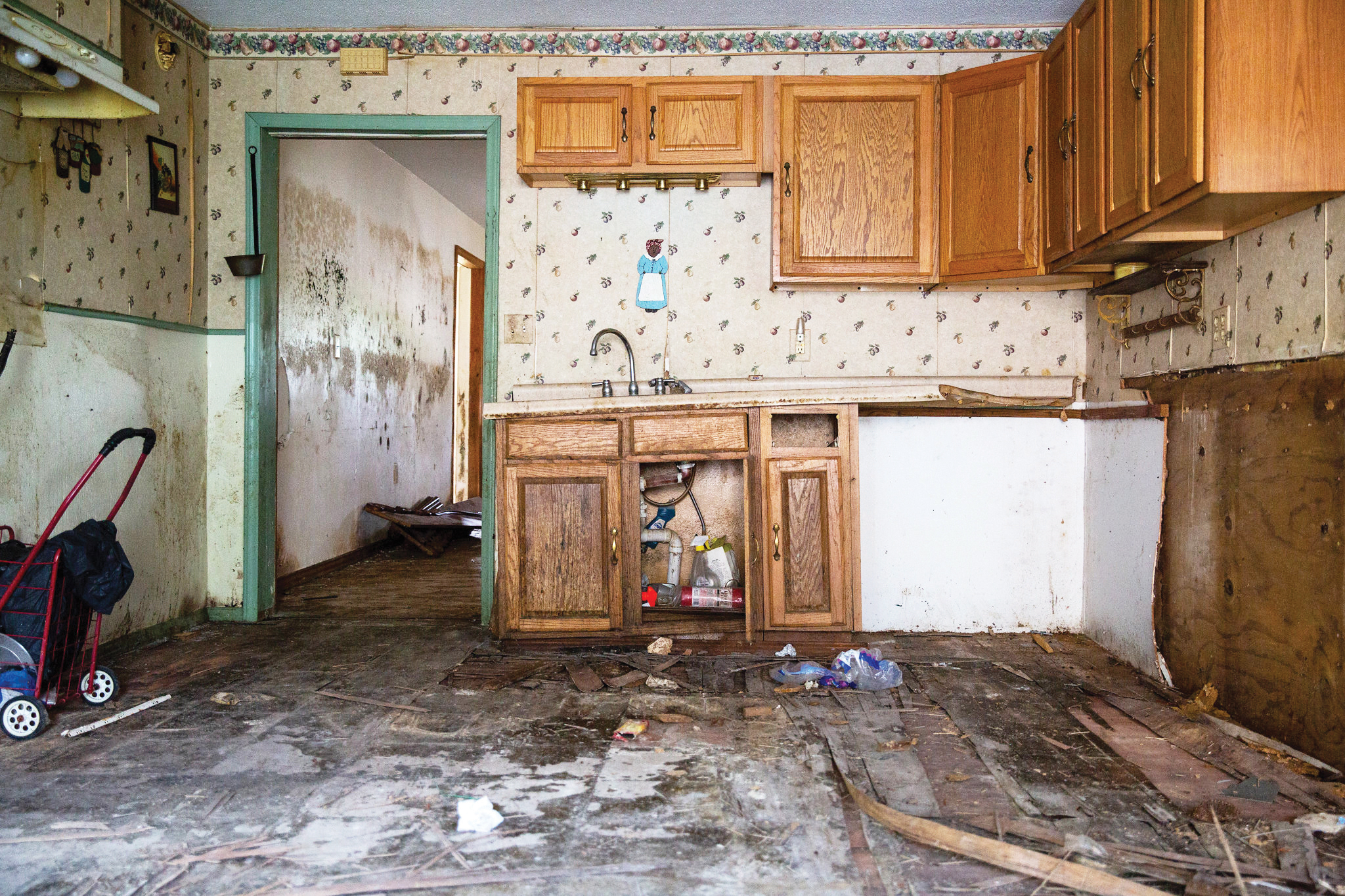
For example, to deal with Hurricane Ike’s $30 billion devastation, Congress gave Texas about $3 billion through HUD. Governor Rick Perry came up with a Rube Goldberg-worthy scheme to manage the funds: He divided duties between the state housing department and an obscure, now-defunct rural affairs agency. Those agencies in turn passed money down to local councils of government (so-called COGs), which then spent years getting the funds into the hands of storm victims.
For its part, the South East Texas Regional Planning Commission (SETRPC), the COG that covers Port Arthur, got $190 million for housing and infrastructure programs, which, according to the organization’s latest financial report, should finally be all spent by the end of September, 10 years after Ike made landfall.
SETRPC Executive Director Shaun Davis says he had more than 4,000 applications to construct new houses after Ike, but only enough money to build about 800 homes. “There were hundreds of deserving, eligible people who I just couldn’t serve, and that will be the case again this time,” Davis told the Observer. “Folks who are in that position, who still don’t get served, it’s natural for them to say something’s wrong with the system because, ‘I’m the perfect candidate.’ … Yes, yes you are, and I wish that we had the ability to serve every one of you.”
After Harvey, the COGs have taken a back seat. The GLO says it’s staffing up to administer those programs itself, with help from the COGs to determine how much money goes where.
“They’re talking about people wanting to come back. Come back to what?”
In May, GLO submitted its plan for spending $5 billion of the $10 billion in recovery assistance Texas expects to receive from Congress. Fair housing advocates immediately questioned why the plan doesn’t include certain programs geared for low-income storm victims. For example, after Ike they successfully forced the state to implement a “Homeowner Opportunity Program” that allowed homeowners with storm damage to move out of high-poverty, disaster-prone areas.
GLO has also proposed spending $413 million of the federal dollars to pay for storm and hazard mitigation projects, in part because the federal government offers a 3-to-1 match. But fair housing advocates say that shortchanges housing recovery efforts. Instead, the advocates, along with a slate of mayors and county judges, have urged Governor Greg Abbott to tap Texas’ $10 billion Rainy Day Fund to quickly support a massive infrastructure overhaul for coastal cities. Abbott has so far balked, arguing there will be plenty of money to go around. When asked about the Rainy Day Fund at the Texas GOP convention in June, GLO Commissioner George P. Bush punted, saying, “I’m going to leave that to the Legislature in the next session.”
Meanwhile, there’s also concern that the state’s process for distributing disaster recovery grants undercounts the needs of the poorest people. In deciding how to divvy up billions in aid, GLO effectively ignores any damage claims below $8,000 for homeowners or $2,000 for renters. Charlie Duncan, research director with Texas Housers, says that puts poor areas with low property values at a disadvantage. When Texas Housers ranked the 20 zip codes most underfunded by GLO’s plan, one of Port Arthur’s two zip codes topped the list, with an estimated $41 million in unfunded need. Majority Hispanic and African-American communities in Harris County made up most of the rest. “These and other communities will not be able to recover and will be left on their own and will continue reeling from the effects of the storm,” Duncan said.
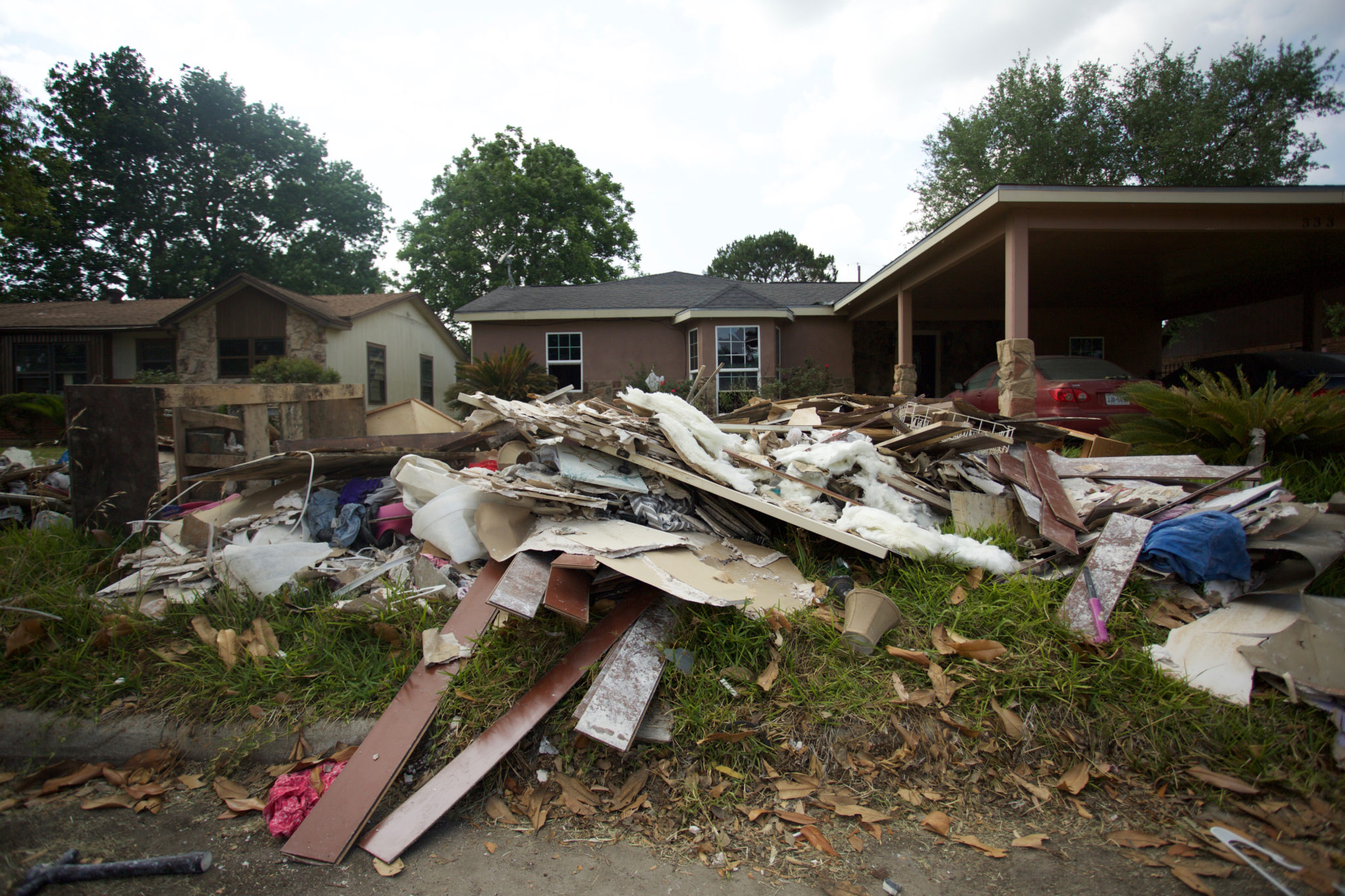
A GLO spokesperson said federal rules limit the state’s ability to be flexible.
How much of the federal aid will go to housing recovery for low-income communities isn’t yet clear. While HUD requires that 70 percent of the funding help low- to moderate-income homeowners, governments often petition to lower that threshold. In an op-ed published in the Galveston Daily News in April, Bush wrote that he emailed Texas’ congressional delegation four days after Harvey struck, seeking to lower the threshold to 50 percent. “Storms do not only affect low-to-moderate income residents,” he wrote. “I have consistently advocated for maximum flexibility of federal recovery funds to allow local leaders to determine how best to help their communities recover.”
Bush wouldn’t agree to an interview with the Observer, but his deputies argue GLO has done the best it can to match resources to communities with the greatest unmet need across a breathtakingly large disaster zone. “This storm was 41,500 square miles, which is an area the size of the state of Indiana,” said Pete Phillips, the senior deputy director in charge of recovery programs at GLO. “Think about the complexity associated with a recovery [like] the GLO is grappling with when you have such a large impact area.”
“There’s just a lot of what used to be that ain’t here anymore.”
Phillips says GLO has worked with the imperfect federal system to get storm victims help as quickly as possible. He said the agency is already reviewing how emergency disaster relief programs could run more smoothly next time. Bush has personally visited with Port Arthur officials on several occasions since Harvey to better understand the city’s long-term recovery needs.
As John Beard learned about the state’s plan, however, he worried that Port Arthur had fallen off the radar. The city didn’t get a dime of the first $58 million HUD gave Texas to jump-start housing recovery two months after Harvey hit; almost all of it went to Harris County for property buyouts, while the remaining $11 million went to build affordable multifamily housing in the Coastal Bend.
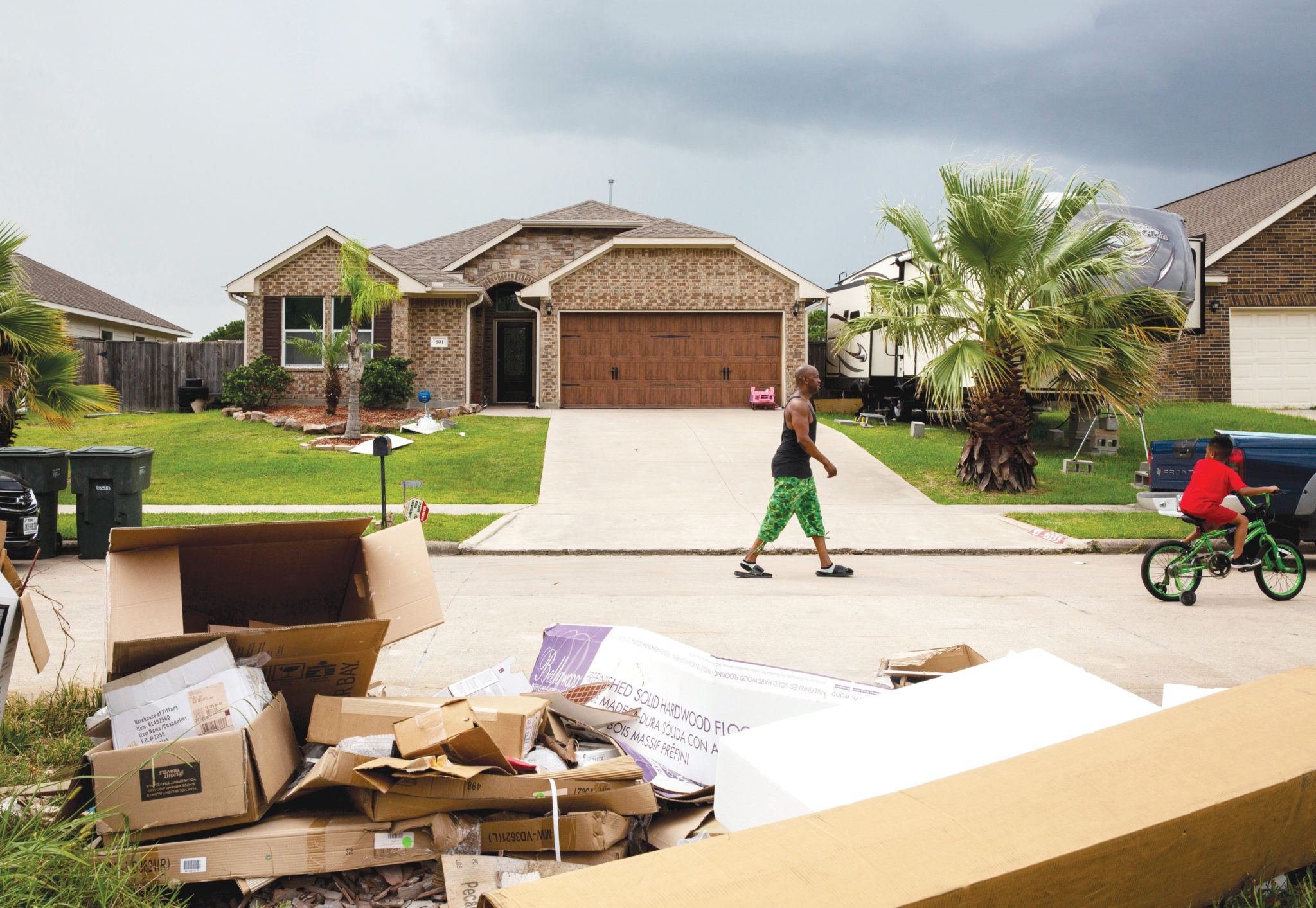
After a GLO information session in May, Beard asked Heather Lagrone, GLO’s deputy for community development and revitalization, how housing could be rapidly rebuilt in Port Arthur before displaced people are lost for good. Beard politely nodded as Lagrone explained why the state had poured money into housing to help the tourism-dependent businesses along the coast. “The 24-hour McDonald’s can’t stay open because they can’t hire enough staff,” she said. “Their Walmart, for the first time, has put in self-check because they can’t hire enough staff to man the checkouts the way they used to.”
More money would eventually come to fund similar projects in other areas, Lagrone assured Beard repeatedly. Beard walked away frustrated. What did a McDonald’s in Rockport have to do with Port Arthur’s plight? “Once again, there’s that disconnect,” Beard said. “There’s these people, the bureaucrats and the people who want to provide services, and the people who are down here that actually need it.”
City and state officials recognize that the Harvey recovery process will take years. But they’re also racing against the next hurricane. Some who have stayed in Port Arthur are already quietly devising exit plans in the likely event of another major storm. In between hurricanes, residents are increasingly dealing with routine flooding. In January, a heavy rainstorm flooded some of the same neighborhoods that had taken on Harvey’s floodwaters months earlier, once again swamping homeowners who had only begun to rebuild.
For now, Hilton Kelley is fixing his house, installing a concrete berm around the base to prevent future flooding. Once he’s done with repairs, Kelley plans to tie up a rowboat in the front yard. If he ever has to use it, he says, he’s not coming back.
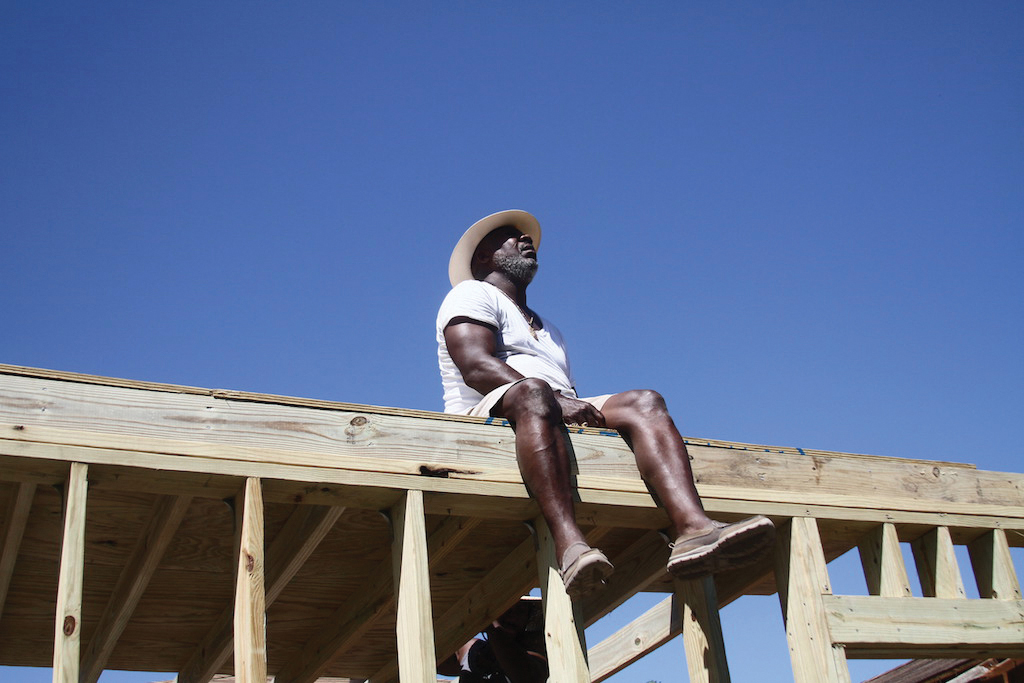
Janice Rogers has no interest in returning. When Harvey hit, she waded through waist-deep water to evacuate the ground floor of her Westside apartment, inside one of the two public housing projects that remain in the shadow of Port Arthur’s refineries. Just months before the storm, Rogers had joined Kelley to protest the company responsible for an industrial fire that smoldered for weeks, billowing foul-smelling smoke into her neighborhood and triggering a rash of health complaints. The $1.3 billion post-Harvey plan city officials passed in June doesn’t include plans to demolish and relocate the disaster-prone, refinery-adjacent apartments.
“That to me is a tragedy,” said Amy Dinn, an environmental justice attorney with Lone Star Legal Aid. “If they’re putting people back in places where they are going to be harmed … then they’re really not offering a resilient recovery to those communities. Why would anyone want to come back to a housing complex knowing that it floods and remains in one of the most contaminated areas in the United States?”
Displacement hasn’t been easy for Rogers. While HUD offers vouchers for people who wind up homeless after a storm, many apartment complexes won’t take them. For months, Rogers slept on an air mattress inside a Dallas church that took her in after the storm, and she commuted several hours by bus each day to get to her new job. Now she sleeps on a friend’s couch and hopes to soon move into an apartment.
“I was done with Port Arthur,” she said. “I was getting tired. Port Arthur was going down, down, down. Things are not going to get better there. I’m afraid it’s only going to get worse.”
Sanders doesn’t know whether she’ll have a home to return to once FEMA asks for its trailer back, or if her experience after Ike will repeat itself. “I’m frustrated and I’m confused and I need answers,” she said. “And if it happened then, who’s to say it ain’t gonna happen again?”
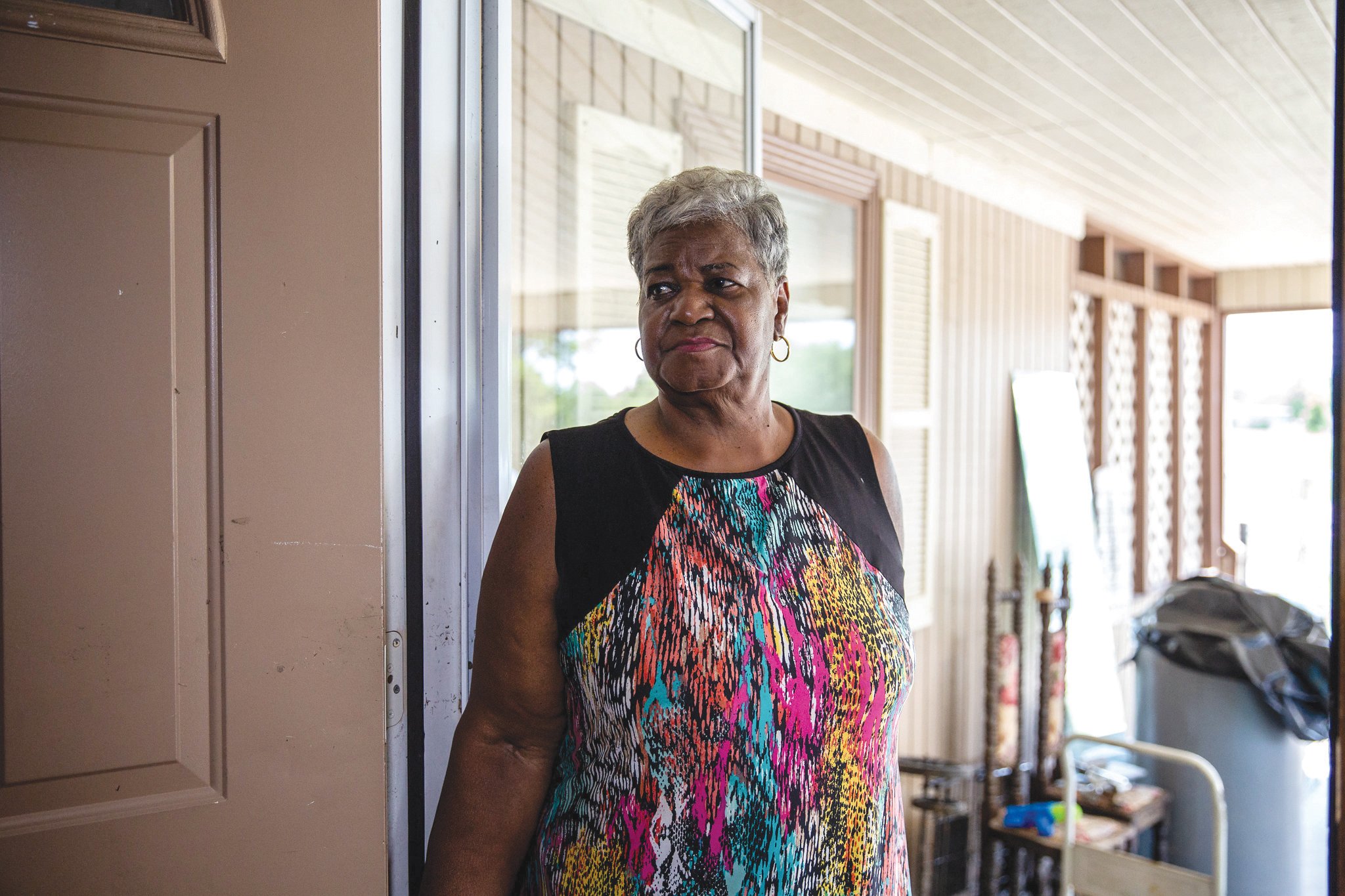
Sanders hopes Harvey is the last big storm she’ll have to live through. But the floods in January brought water to the deck of her trailer, making a lake of her front lawn, deep enough for a boat to pass through. Sanders would be OK with moving away from her flood-prone neighborhood, as long as she can stay in Port Arthur — that’s where her family is. But for now, she’s just waiting, not knowing what will happen. That’s the hardest part.
A few months ago, when Sanders was feeling especially down, a friend called to check in. She wanted to remind Sanders about the biblical story of Job, whose faith in God was tested when Satan, with God’s permission, took everything from him. “Job lost everything he had. And he didn’t do nothing for it to all be taken away from him. But Job said, ‘I’m going to stay right here and wait,’” Sanders said.
Sanders still thinks about what her friend told her: “She said, ‘Bea, I want you to stay there and wait. Don’t let that old devil let you get where you don’t have no more faith, no more courage.’ She told me I’m gonna be just like Job. I’ll have more than I had before the storm came.
“I needed that sermon. Lord, I needed that sermon,” Sanders said. “We ain’t no better than Job.”
Illustration by Chris Gash.
